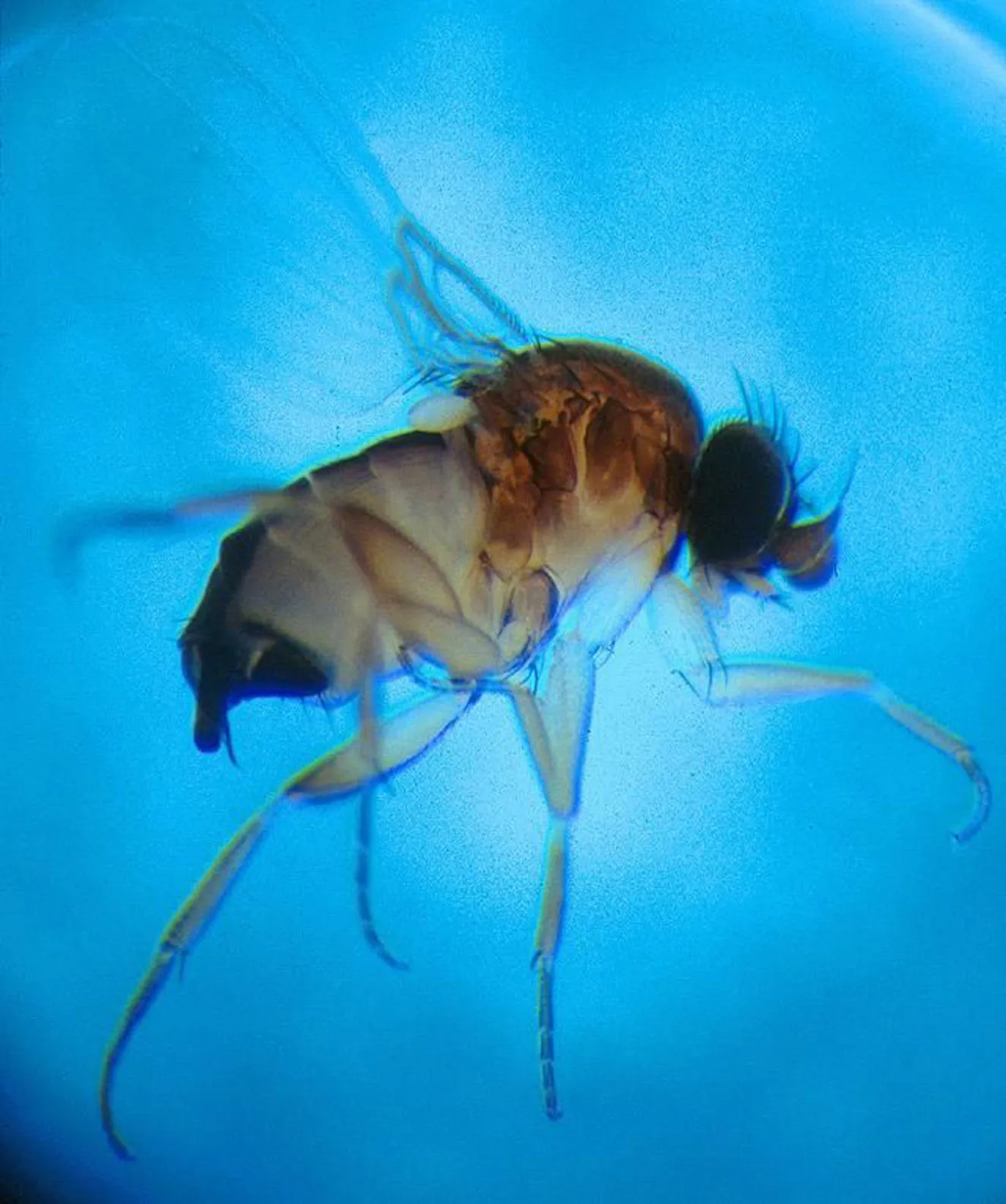Which Fly Runs?
On a recent trip out west, I was lamenting the inability to get flights coordinated. Yes, I was driving 1,300 miles and would do it in the same amount of time that I could have flown. As you can guess, it was also cheaper to drive. Nonetheless, it did not stop me from wishing I had a pair of wings. Then I thought about flies and remembered there is a fly that has perfectly good wings but chooses to run. Which fly runs?
Wings to Fly and Legs to Run
Flies are winged insects which means they have 3 pairs of legs. Having dual transportation options makes it much easier for them to navigate odd circumstances. The fruit fly, for example, can fly to a branch or shelf where rotting food is sitting. Once it lands, it can crawl around until it finds the best place to lay its eggs. There are many flies that can scoot and crawl around fairly efficiently, but they typically realize their wings are their best asset. This is not the case with the family phoridae.
The Fly’s Choice to Run

As with my choice to drive over fly, the surface decision seems silly, but a deeper dive reveals other costs and benefits that are considered. In the family phoridae, we have a host of nasty flies. These things like everything from rotting corpses (coffin fly) to human waste (humpback fly). If you think about these circumstances, they are often going to be in confined spaces. If you have spent much time in a coffin, you probably won’t be reading this. But nonetheless, you are probably aware they aren’t built with much extra space. A similar design is built into sewage pipes, no reason to waste space on waste. Since their lives are built around these spaces, they have a lot of motivation to run.
Who Cares if a Fly Runs?
Nobody cares about our friend the poo fly until it comes to visit. That is when the call comes in. They are very small and tend to scatter from their source. This makes source identification and for most people, species identification quite difficult. Our best clue we gather in these situations is the description of their locomotion. They run. Knowing which fly runs helps us dial in the pest plan and best solution.
What to do About the Running Fly
If you see this small fly running around, think of where it most likely came from and sanitation should be at the forefront of the mind. When this fly runs, it will carry plenty of disease along with it, so places they are seen need disinfected. Additionally, finding the source and taking care of it is important. All too often, the presence of these flies indicates a break in a sewage drain in a wall somewhere. Finding, repairing, and cleaning are the next steps. Taking care of the source will take care of the flies, but there are also additional treatment options to speed up the disappearance of these unwanted visitors.
Run to Rove
Small flies are incredibly annoying whether they run, fly, or just sit and stare at you. If you need help with:
- identification
- source seeking
- prevention
- just making sure they end up dead
give us a call and we will send our small fly gurus to save the day and get things headed on the right track.
